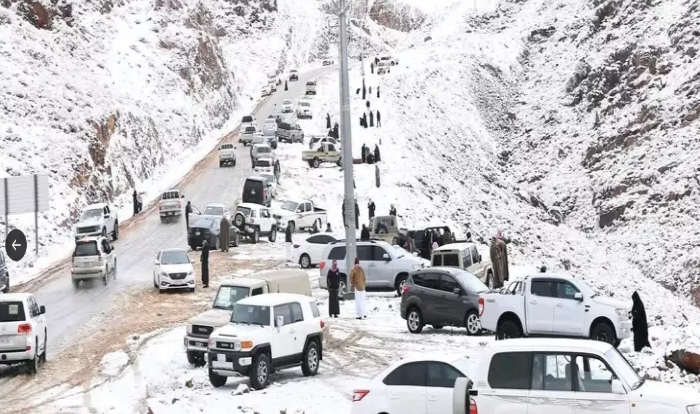
Tropical Storm Rafael has intensified over the Caribbean Sea, setting its sights on the Gulf of Mexico with potential impacts on Cuba, the U.S. Gulf Coast, and specifically, Louisiana. As the season draws to a close, this late-forming storm has raised concerns along the Gulf, particularly in Louisiana, where it could bring severe weather later in the week.
Storm Development and Path Forecast
Initially forming near the Lesser Antilles, Rafael was upgraded to a tropical storm over the weekend, making it the 18th named storm of a particularly active Atlantic hurricane season. Moving in a west-northwest direction, the storm is expected to strengthen into a Category 1 hurricane by mid-week as it approaches Cuba, driven by warm ocean waters and favorable atmospheric conditions.
The National Hurricane Center (NHC) has issued warnings for parts of the Caribbean, including hurricane watches in Cuba, Jamaica, and the Cayman Islands. Current forecasts project that Rafael will enter the Gulf of Mexico on Wednesday or Thursday, with Louisiana, Mississippi, and eastern Texas in the storm’s potential path. Louisiana’s proximity to the Gulf Coast, coupled with its low-lying areas, makes it particularly vulnerable to storm surges and flooding.
Potential U.S. Landfall and Timing
Meteorologists predict that Rafael could weaken as it approaches the northern Gulf Coast due to seasonal weather patterns typical of November. Cooler water temperatures, increased wind shear, and the influx of dry air in the Gulf are expected to reduce the storm’s intensity before it reaches the U.S. However, even a weakening tropical storm can cause significant rainfall and gusty winds, which could impact the Louisiana coast as early as Friday evening, carrying over into Saturday.
If Rafael does make landfall in Louisiana, it will set a historic precedent, as November hurricanes are uncommon in the region. The state has experienced late-season hurricanes before, but a November hurricane would mark a rare occurrence, raising concerns for residents who are typically in recovery mode from the peak storm season rather than bracing for new storms.
Impact on Gulf Coast Communities
Louisiana and surrounding Gulf Coast communities, still recovering from previous storm seasons, are preparing for the potential rainfall, strong winds, and minor flooding that Rafael could bring. Emergency preparedness officials are encouraging residents to take preliminary precautions, including checking emergency kits, securing property, and staying updated on Rafael’s progress.
“There is still a lot of uncertainty regarding Rafael’s track and intensity, especially as it moves into the Gulf where it may weaken,” says the NHC. “The storm’s path could still shift significantly, and any coastal impacts will depend on its final trajectory.” Louisiana residents should be prepared for tropical-storm-force winds, which could disrupt power lines and cause minor property damage.
A Rare Late-Season Threat
While the Atlantic hurricane season runs through the end of November, late-season hurricanes are relatively uncommon, especially in the Gulf. However, warmer ocean temperatures extend the conditions conducive to tropical storm development, leading to more frequent late-season storms. Scientists have observed that warming ocean temperatures in the Gulf and Caribbean, partly attributed to climate change, may contribute to this extended period of storm activity.
The threat of late-season storms like Rafael underscores the importance of continued readiness in coastal areas even as the typical hurricane season peaks pass. If Rafael were to make landfall as a hurricane, it would be the latest in Louisiana’s recorded history, demonstrating the increasing unpredictability of storm patterns.
Precautions and Preparations
In anticipation of potential impact, the Louisiana Governor’s Office has advised residents to keep a close watch on the forecasts. Many local municipalities are already clearing drainage systems to prevent flooding and are on standby for emergency evacuations if necessary. Schools in some parts of the Gulf Coast are preparing contingency plans, with officials prepared to suspend classes if the weather deteriorates significantly by Friday.
Louisiana emergency response teams are also coordinating with federal agencies to ensure resources are available should Rafael bring more severe conditions than expected. The state, which has weathered hurricanes Ida, Laura, and Delta in recent years, is experienced in managing hurricane responses but faces unique challenges due to the timing of this storm, coming in November rather than the peak summer months.
Preparing for Rafael
The NHC continues to track Rafael’s movement closely and has urged Gulf Coast residents to remain vigilant and avoid complacency, especially given the storm’s unpredictable nature. “The intensity and exact track of Rafael will determine the extent of the impact along the Gulf Coast, but residents should take all necessary precautions now,” advised an NHC spokesperson.
The development of Tropical Storm Rafael and its projected path towards the Gulf serves as a reminder of the unpredictability of storm seasons and the importance of sustained preparedness efforts in coastal regions. For residents in Louisiana and nearby areas, Rafael’s arrival could mean a rainy and windy end to an already active hurricane season, reinforcing the need for caution as they await more detailed updates on this late-season storm.
This article provides a unique, comprehensive summary of Tropical Storm Rafael based on available details and perspectives from recent reports.



